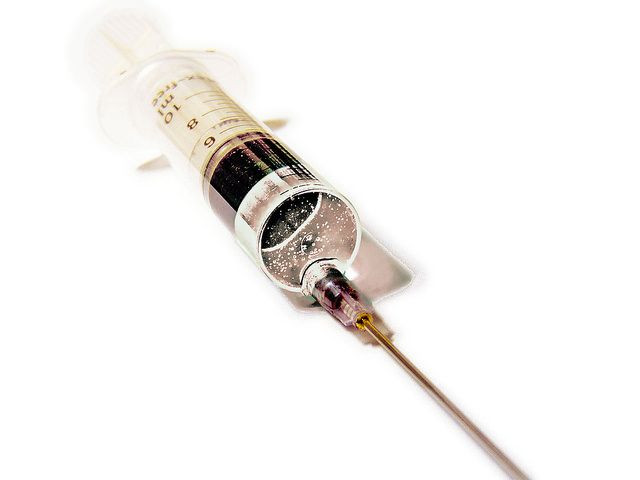Scientists Advocate Need For New, Safer Polio Vaccines To Prevent Outbreaks After Its Eradication

The end of polio looms ever, if precariously, closer. But what will happen to its vaccine afterward? That’s the broad question broached by a group of researchers, led by Dr. Phillip Minor of the UK’s National Institute for Biological Standards and Control (NIBSC), this Thursday in PLOS Pathogens.
As they explain, the global health community is poised to remove the oral polio vaccine (OPV) off the market permanently once eradication is confirmed — in hopes of preventing the rare possibility of an outbreak emerging from the weakened but very much live strain of the poliovirus utilized in them. Because the OPV has been the primary tool in polio prevention, however, the world will need a standby vaccine to maintain immunity for the foreseeable future. And while the current leading strategy is to jumpstart mass-production of the inactivated polio vaccine (IPV), using either wild-type poliovirus or the weakened “Sabin” strain as its base, Minor and his colleagues strongly believe a third option should be chosen.
While the IPV is one of the safest vaccines around, incapable of inadvertently causing polio or triggering the rare side effect of paralysis associated with the OPV, there are drawbacks involved in its production — namely, that most IPV manufacturers use batches of wild-type poliovirus to make them. While these batches are safely killed off long before they reach a syringe, the possibility of a factory leak into a populated area is still present, if unlikely. The risk is so feared that the World Health Organization (WHO), through its 2015 Global Action Plan for polio eradication, recommended that no factories producing the wild-type version of IPV be built in low-income countries where a polio outbreak could be transmitted easily.
An IPV version using the Sabin strains of polio, the same type found in the OPV, carries a similar, if smaller, risk of contamination — should the Sabin strain be let loose into the environment, there’s the remote chance it can revert back into an infectious, disease-transmitting version and ignite a new outbreak.
To get around these potential dangers, Minor and his colleagues sought to create an alternative version of the Sabin strain, one less susceptible to mutation, by modifying its viral RNA. They then took their new creation through its paces, testing not only its genetic stability, but whether they could adequately match up to the competition in terms of effectiveness, paralysis risk, and cultivability. "We have developed new strains for IPV production with negligible risk to the human population should they escape," they concluded.
Noting that the WHO’s Global Action Plan calls for the formulation of an expert panel to evaluate the safety of new “derivatives containing wild poliovirus capsid sequences” by comparing them to the Sabin strain in the wake of post-eradication, Minor and his team are hopeful their creation will fit that criteria.
Even should that happen, though, there are still stumbling blocks. According to a 2009 report from the Bill & Melinda Gates Foundation on the global IPV market post-eradication, the major manufacturers of the IPV have been adamant about their refusal to switch from using wild-type polioviruses to even the Sabin strain, citing their version’s "proven track record of successful use." And while Minor’s strain could be very useful in lower income countries that self-produce their polio vaccine, there’s the question of whether it could be ready for production by the time post-eradication efforts begin to ramp up — provided it actually works. Not to be forgotten in all this are the higher costs and overall lower protection that come with any version of the IPV compared to the OPV, though research efforts are underway to solve these problems.
Still, the drive to create a safer polio vaccine is one worthy of encouragement. Here’s hoping it succeeds.
Source: Minor P, et al. PLOS Pathogens. 2015.



























